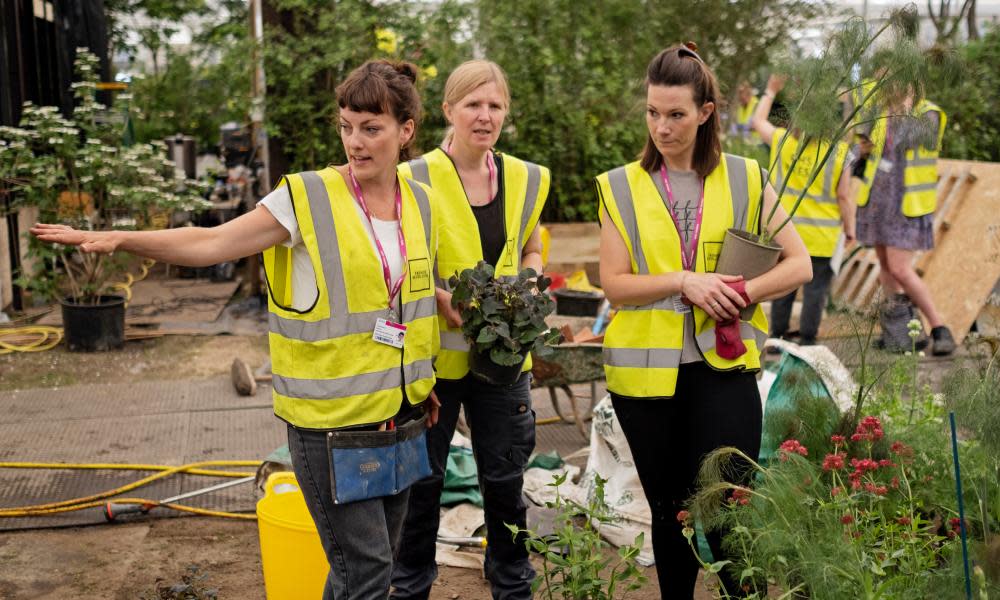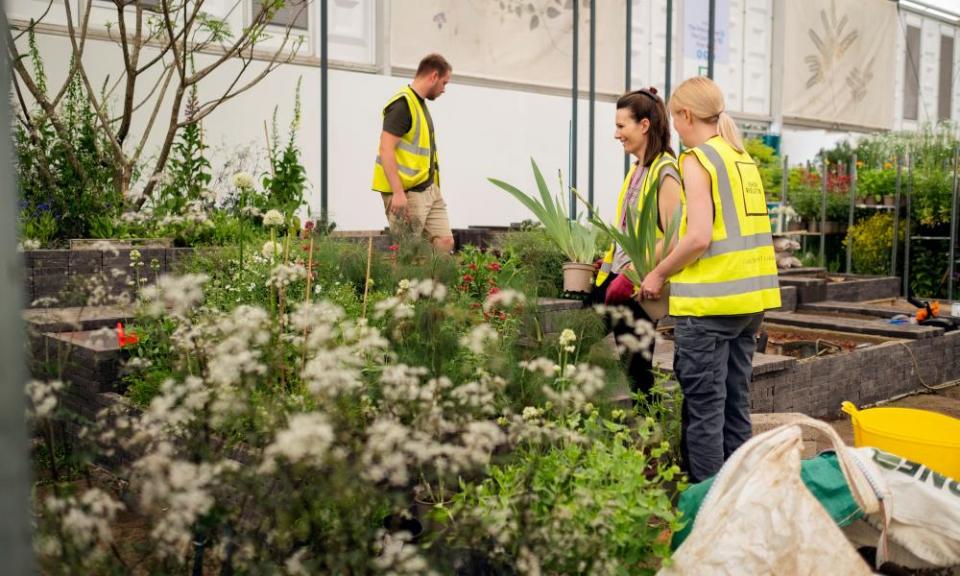Gardeners use plant dyes to combat toxic chemicals used by fashion industry

Gardeners are fighting back against the toxic chemicals used by the fashion industry – by using plants to dye their clothes.
The horticulturist Lottie Delamain created a garden for the activist movement Fashion Revolution at Chelsea flower show using plants that can be used to make fabrics and dyes. She became so enthused by experimenting with using plants to make clothes dyes that she has dyed many of her own garments using flowers and even tree branches from her own plot at home.
The fashion industry is responsible for up to one-fifth of industrial water pollution in the world and much of this is from the chemicals used to dye clothes. Many dyes used in clothes are carcinogenic and in large quantities can make river water toxic to aquatic life.
Plants have traditionally been used to dye clothes, before the advent of synthetic chemicals, and are still used in many parts of the world.

“We were inspired by a trip I did in Vietnam where I saw women growing plants to dye and make their clothes right next to their veggies,” Delamain says, adding: “but more and more we are using petrochemicals to make our clothes, which is such a shame. So this is about reminding people that clothes have historically come from plants and trying to make them feel that connection again.”
Related: Bee’s knees: pollinators are stars of Chelsea flower show
Her garden is full of flax, which can be used to make fibre for clothes, but she has also included many plants which can be used to dye clothes – and some are rather surprising.
Pointing at a woven sculpture made of thin, bendy willow twigs, she says: “Willow makes a lovely pink colour, which you wouldn’t expect.”
The garden also includes a large textile installation, created using fabric she had dyed using plants.
When Delamain took on this garden challenge, she did not realise she would become a convert, DIY-dying her clothes with plants.
“It’s a great way to make your clothes last longer,” she says. “I have a shirt that I’m going to wear next week that I bought at a charity shop. I didn’t like the colour so I dyed it with plants in the garden to give it new life.”
The process is surprisingly easy. “You literally get some leaves, chuck them in a pot, put the T-shirt in and off you go. Some plants are permanent by themselves but for others you add a mordant, which fixes the dye to the clothes.”
Delamain recommends others give it a go: “It’s really fun and you’ve invested the time to dye your own top, you’ve got a bit of a story about it and it’s so nice. A bit more interesting than just buying something from Zara.”
This trend is not just the garden designer mucking around in her shed – while researching the garden she realised this movement is part of a growing trend.
“We’ve made the connection with food and where our food comes from, and I think the next thing that people are beginning to question is what’s in their clothes and where it’s coming from,” Delamain says.
“During the last year or however long I’ve been working on this I have come across a massive group of craftspeople, dyers and people who are experimenting with plants.”
The method also extends the life of garden plants as they do not need to be used at their prime, and when removing heads to promote new growth, these scraps can be used in the dye pot.
“It’s easier to dispose of clothes made from natural fabrics and dyes,” she adds, “so you know that what you are wearing came from the earth – and it’s going back to the earth.”
Natural colours – plants to dye clothes with
Brown onion skins can turn clothes yellow
Weld also creates a beautiful, strong yellow dye
Willow branches can make clothes pink
Tulips produce a bright green
Hollyhocks can turn clothes brown
Roses and lavender can turn clothes pink
Hibiscus creates a beautiful purple.


